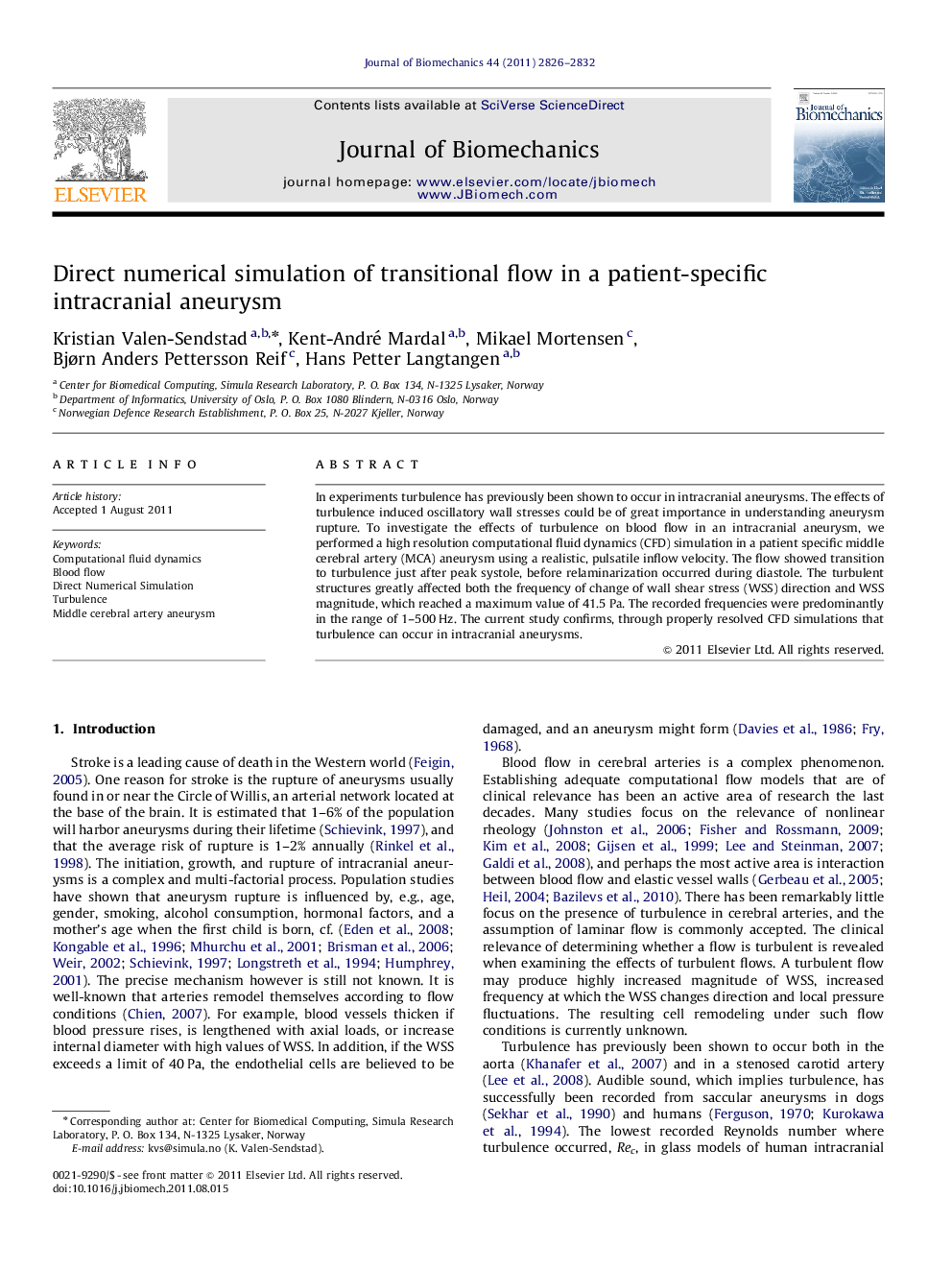| Article ID | Journal | Published Year | Pages | File Type |
|---|---|---|---|---|
| 872419 | Journal of Biomechanics | 2011 | 7 Pages |
In experiments turbulence has previously been shown to occur in intracranial aneurysms. The effects of turbulence induced oscillatory wall stresses could be of great importance in understanding aneurysm rupture. To investigate the effects of turbulence on blood flow in an intracranial aneurysm, we performed a high resolution computational fluid dynamics (CFD) simulation in a patient specific middle cerebral artery (MCA) aneurysm using a realistic, pulsatile inflow velocity. The flow showed transition to turbulence just after peak systole, before relaminarization occurred during diastole. The turbulent structures greatly affected both the frequency of change of wall shear stress (WSS) direction and WSS magnitude, which reached a maximum value of 41.5 Pa. The recorded frequencies were predominantly in the range of 1–500 Hz. The current study confirms, through properly resolved CFD simulations that turbulence can occur in intracranial aneurysms.
